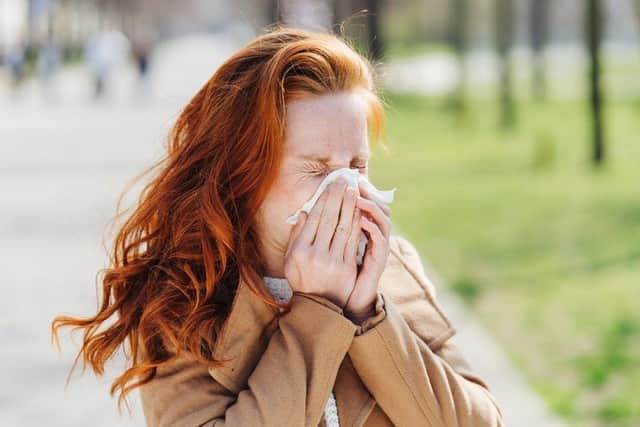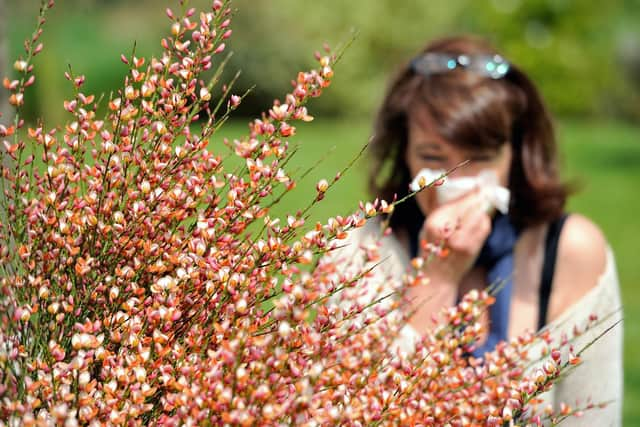Hayfever warning as first ‘pollen bomb’ of the year hits UK - list of hayfever symptoms & areas affected
Hayfever sufferers have been warned the first ‘pollen bomb’ of the year has landed which could cause misery for many this week. Some parts of the UK have been issued with a red ‘high alert’ warning by the Met Office as we head into spring.
The NHS website states hayfever is usually worse between late March and September, especially when it’s warm, humid and windy. According to the Met Office the high levels this week are coming from tree pollen including birch, hornbeam, willow and ash. As well as fungal spores Aspergillus Penicillium and Pleospora which are in peak season.
Advertisement
Hide AdAdvertisement
Hide AdMost of the UK has been issued with the high-level pollen alert, including the East Midlands, East of England, London and the South East, Wales, South West and West Midlands. There is also a ‘very high’ alert in some parts on Easter Sunday (April 9).
However, most of the north of England, Scotland and Northern Ireland has not been affected by the ‘pollen bomb’.
The Met Office website says around two in every ten people suffer from pollen allergies and it is thought that more than 10 million people in Britain suffer from hay fever. You are more likely to suffer from hay fever if you have a family history of allergies, or if you suffer from asthma or eczema.


Most people develop hay fever in childhood or when they are a teenager, although it can be triggered at any age. Many people find, however, that they grow out of the condition and suffer less from the symptoms of hay fever as an adult.
Hayfever symptoms
The NHS website states symptoms of hay fever include:
- sneezing and coughing
- a runny or blocked nose
- itchy, red or watery eyes
- itchy throat, mouth, nose and ears
- loss of smell
- pain around your temples and forehead
- headache
- earache
- feeling tired
If you have asthma, you might also:
- have a tight feeling in your chest
- be short of breath
- wheeze and cough
How to stop hay fever - do’s and don’ts
Advertisement
Hide AdAdvertisement
Hide AdThere’s currently no cure for hay fever and you cannot prevent it. However, you can do these things to prevent symptoms.
- put Vaseline around your nostrils to trap pollen
- wear wraparound sunglasses to stop pollen from getting into your eyes
- shower and change your clothes after you have been outside to wash pollen off
- stay indoors whenever possible
- keep windows and doors shut as much as possible
- vacuum regularly and dust with a damp cloth
- buy a pollen filter for the air vents in your car and a vacuum cleaner with a HEPA filter
- try to stay at home and avoid contact with other people if you have a high temperature or you do not feel well enough to do your normal activities


What to avoid when you have hayfever
- do not cut grass or walk on grass
- do not spend too much time outside
- do not keep fresh flowers in the house
- do not smoke or be around smoke – it makes your symptoms worse
- do not dry clothes outside – they can catch pollen
- do not let pets into the house if possible – they can carry pollen indoors
Comment Guidelines
National World encourages reader discussion on our stories. User feedback, insights and back-and-forth exchanges add a rich layer of context to reporting. Please review our Community Guidelines before commenting.
